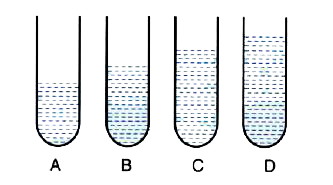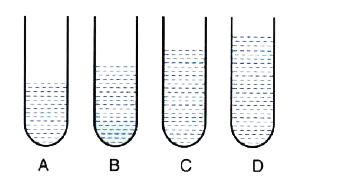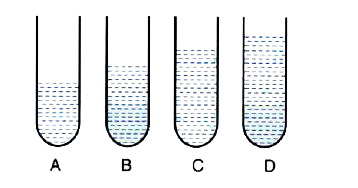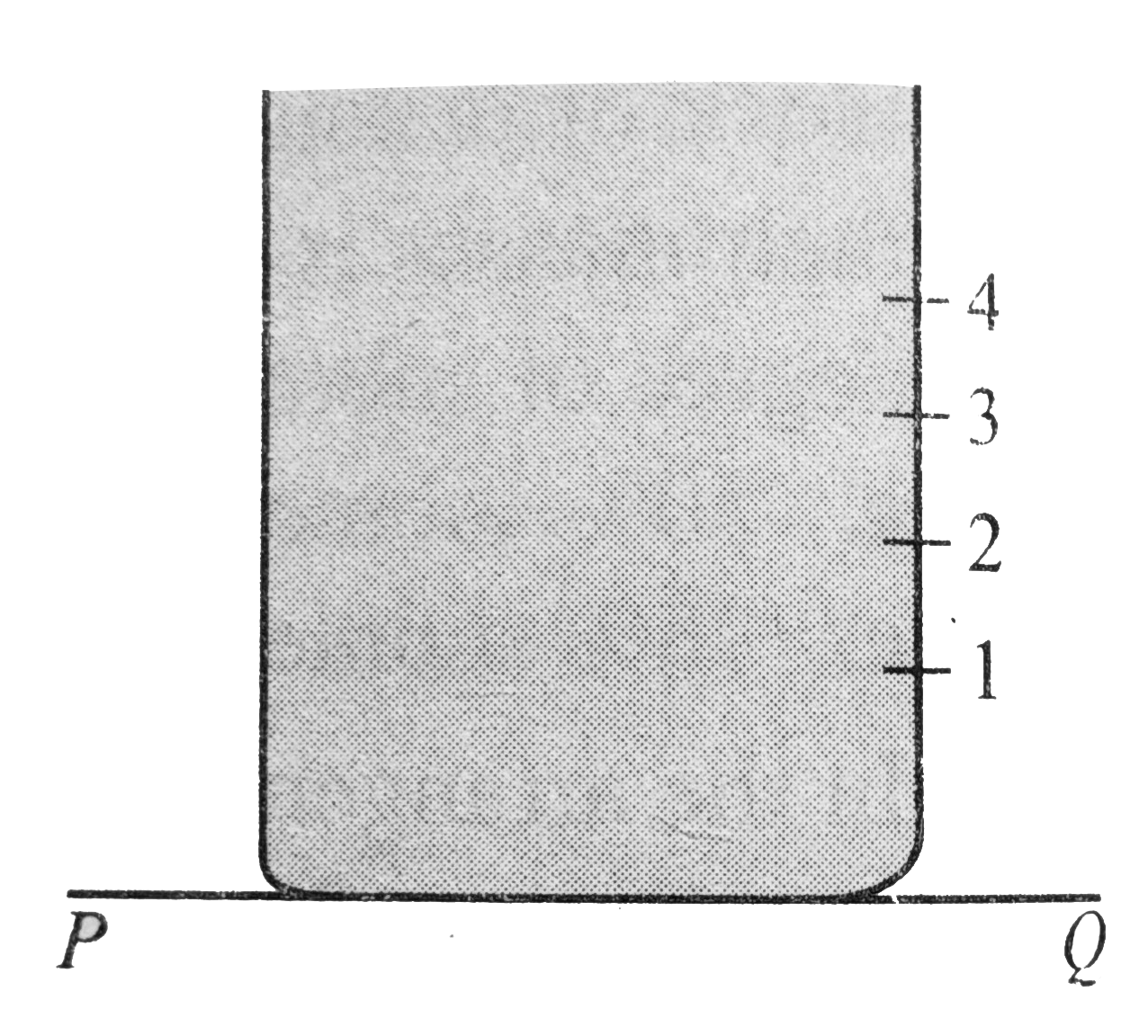In Fig. , A, B, C and D represent the test tubes each of height 20 cm which are filled with water up to heights of 12 cm, 14 cm, 16 cm and 18 cm respectively. If a vibrating tuning fork is placed over the mouth of test tube D, a loud sound is heard.

Give the reason for your observation in each tube.
Frequency of air column in tube D is equal to the frequency of the tuning fork. Resonance occurs with the air column in tube B whereas no resonance occurs with the air column of tubes A and C. The frequency of vibrations of air column in tube B is same as the frequency of vibrations of air column in tube D because the length of air column in tube D is 20 - 18 = 2 cm and that in tube B is 20 - 14 = 6 cm (i.e., three times). On the other hand, the frequency of vibrations of air column in tubes A and C are not equal to the frequency of vibrations of air column in tube D.
Topper's Solved these Questions
- BOOK - ICSECHAPTER - SOUNDEXERCISE - EXERCISE -7(B)( MULTIPLE CHOICE TYPE)2videos
SOUND
- BOOK - ICSECHAPTER - SOUNDEXERCISE - EXERCISE -7(C )47videos
SOUND
- BOOK - ICSECHAPTER - SOUNDEXERCISE - EXERCISE -7(A) (NUMERICALS )14videos
SOUND
- BOOK - ICSECHAPTER - SIMPLE MACHINES EXERCISE - DIAGRAM BASED MCQ5videos
SIMPLE MACHINES
- BOOK - ICSECHAPTER - SPECIMEN PAPER (SOLVED)EXERCISE - SECTION II78videos
SPECIMEN PAPER (SOLVED)
Similar Questions
In Fig. , A, B, C and D represent the test tubes each of height 20 cm which are filled with water up to heights of 12 cm, 14 cm, 16 cm and 18 cm respectively. If a vibrating tuning fork is placed over the mouth of test tube D, a loud sound is heard.

Describe the observations with the tubes A, B and C when the vibrating tuning fork is placed over the mouth of these tubes.View SolutionIn Fig. , A, B, C and D represent the test tubes each of height 20 cm which are filled with water up to heights of 12 cm, 14 cm, 16 cm and 18 cm respectively. If a vibrating tuning fork is placed over the mouth of test tube D, a loud sound is heard.

State the principle illustrated by the above experiment.View SolutionWater rises to a height of 16.3 cm in a capillary of height 18 cm above the water leve. If the tube is cut at a height of 12 cm -
View SolutionIn a resonance tube experiment when the tube is filled with water up to a height of 17.0 cm from bottom, it resonates with a givben tunign fork. When the water level is raised the next resonance with the same tuning fork occurs at a height of 24.5 cm. If the velocity of sound in air is 330m/s,the tunign fork frequency is :
View SolutionIf the perimeter of a semi-circular protractor is 36 cm, then its diameter is (a) 10 cm (b) 12 cm (c) 14 cm (d) 16 cm
View SolutionTwo cylindrical vessels are filled with oil. Their radii are 15 cm, 12 cm and heights 20 cm, 16 cm respectively. Find the radius of a cylindrical vessel 21 cm in height, which will just contain the oil of the two given vessels.
View SolutionIn a resonance tube the first resonance with a tuning fork occurs at 16 cm and second at 49 cm . If the velocity of sound is 330 m/s , the frequency of tuning fork is
View SolutionWater rises in a vertical capillary tube up to a height of 2.0 cm. If the tube is inclined at an angle of 60∘ with the vertical, then up to what length the water will rise in the tube ?
View SolutionA solid frustum is of height 8 cm. If the radii of its lower and upper ends are 3 cm and 9 cm respectively, then its slant height is
(a) 15 cm
(b) 12 cm
(c) 10 cm
(d) 17 cmView SolutionA cylindrical vessel of 90cm height is kept filled up to the brim. It has four holes 1,2,3 and 4 which are, respectively, at heights of 20cm,30cm,40cm and 50cm from the horizontal floor PQ. The water falling at the maximum horizontal distance from the vessel comes from
 View Solution
View Solution

